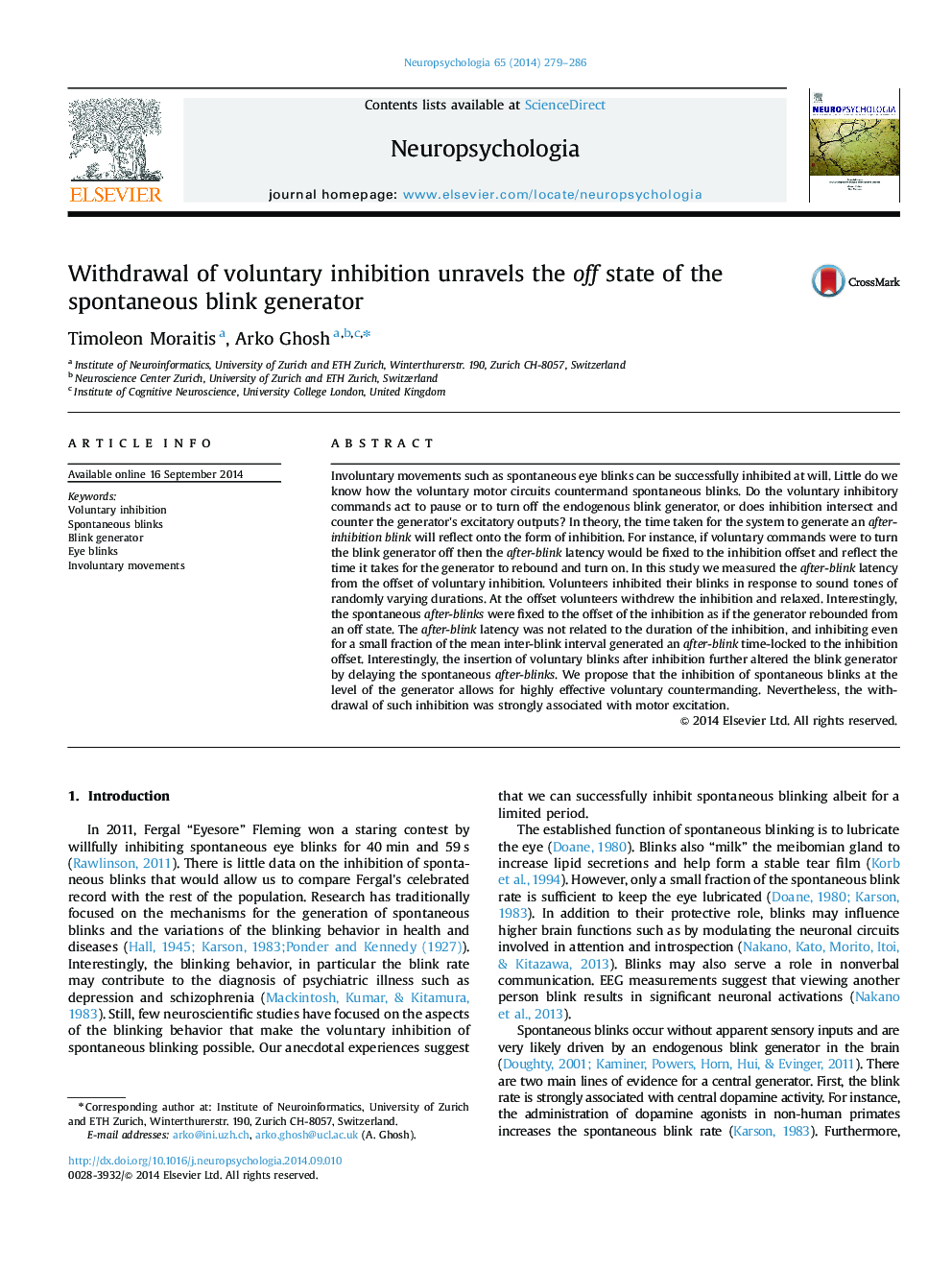| Article ID | Journal | Published Year | Pages | File Type |
|---|---|---|---|---|
| 7320862 | Neuropsychologia | 2014 | 8 Pages |
Abstract
Involuntary movements such as spontaneous eye blinks can be successfully inhibited at will. Little do we know how the voluntary motor circuits countermand spontaneous blinks. Do the voluntary inhibitory commands act to pause or to turn off the endogenous blink generator, or does inhibition intersect and counter the generator׳s excitatory outputs? In theory, the time taken for the system to generate an after-inhibition blink will reflect onto the form of inhibition. For instance, if voluntary commands were to turn the blink generator off then the after-blink latency would be fixed to the inhibition offset and reflect the time it takes for the generator to rebound and turn on. In this study we measured the after-blink latency from the offset of voluntary inhibition. Volunteers inhibited their blinks in response to sound tones of randomly varying durations. At the offset volunteers withdrew the inhibition and relaxed. Interestingly, the spontaneous after-blinks were fixed to the offset of the inhibition as if the generator rebounded from an off state. The after-blink latency was not related to the duration of the inhibition, and inhibiting even for a small fraction of the mean inter-blink interval generated an after-blink time-locked to the inhibition offset. Interestingly, the insertion of voluntary blinks after inhibition further altered the blink generator by delaying the spontaneous after-blinks. We propose that the inhibition of spontaneous blinks at the level of the generator allows for highly effective voluntary countermanding. Nevertheless, the withdrawal of such inhibition was strongly associated with motor excitation.
Keywords
Related Topics
Life Sciences
Neuroscience
Behavioral Neuroscience
Authors
Timoleon Moraitis, Arko Ghosh,
